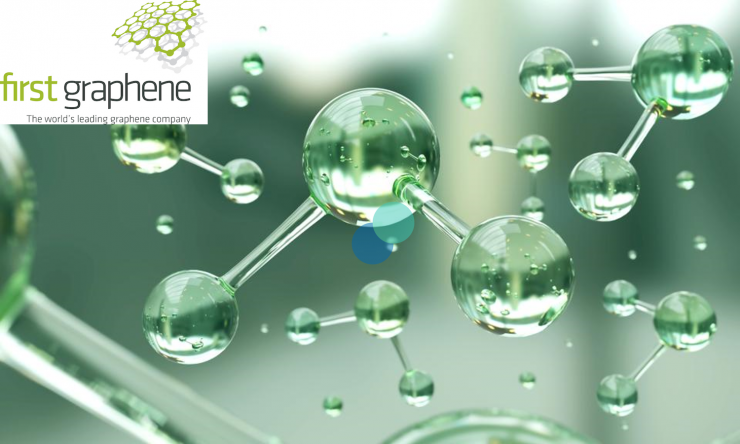First Graphene: Green Hydrogen Manufactured Directly from Petroleum Feedstock. First Graphene Ltd. (ASX:FGR) announces a one-step process that converts petroleum feedstock to graphite/graphene materials. Hydrogen is produced as a by-product with no CO2 generation. The process is exclusive to First Graphene Ltd. with granted patents. The process provides an opportunity for oil producers to manufacture energy storage materials for lithium-ion battery markets.
The Company’s researchers at the Graphene Engineering and Innovation Centre in Manchester, have successfully demonstrated that the hydrodynamic cavitation technology can rapidly produce graphite materials in a single step process. “Green” hydrogen is the only by-product with no carbon dioxide produced in the process.

Following a grant from Innovate UK last year, First Graphene developed a prototype process for direct conversion of petroleum to high value graphene and graphite products, targeting the rapidly expanding energy storage market.
The Company has successfully demonstrated that the hydrodynamic cavitation technology is highly robust, and can be carried out on a range of industry standard, high throughput devices. Graphite materials are rapidly obtained from petroleum feedstock in a single step process; Figure 1 shows reactants before and after a short processing time in a cavitation reactor.
🔥 What about we co-host a webinar? Let's educate, captivate, and convert the hydrogen economy!
Hydrogen Central is the global go-to online magazine for the hydrogen economy, we can help you host impactful webinars that become a global reference on your topic and are an evergreen source of leads. Click here to request more details
Hydrodynamic cavitation is a low-impact process producing “green hydrogen” as a by-product. The hydrogen gas product is rightly classified as “green” as no carbon dioxide is produced in the reaction. While petroleum feedstocks are typically associated with carbon dioxide as they are often combusted with oxygen to produce carbon dioxide products, this is not the case in hydrodynamic cavitation. The minimal net carbon footprint from this process is solely due to the electrical energy used for operation of the equipment, which ultimately could be provided from renewable sources.
The process relies on patented technology which is globally exclusive to the Company. As well as being granted a patent in the UK, a US patent has now also been allowed.
READ the latest news shaping the hydrogen market at Hydrogen Central
First Graphene CEO Mike Bell said while the process was still some way off commercialisation, it presented some exciting opportunities for the petroleum industry.
“With the rapid growth of the electric vehicle market, demand for graphite resources continues to grow, while demand for petroleum products for transport is forecast to decline,” Mr Bell said.
“Natural graphite is listed as a critical raw material by the European Union, and routes to produce graphite from alternative sources with a low carbon dioxide footprint are particularly valuable.”
“This process enables the large-scale manufacture of these critical raw materials from an alternative feedstock, which in this case is widely available petroleum.”

As the chemical purity of the hydrocarbon feedstock can be carefully controlled; the resulting products are high-purity graphitic materials with very low metal contaminants, ideal for use in lithium-ion battery materials market; which is expected to grow to USD 83.43 billion by 2026.
Products that include graphene, graphite, coated cathodes and functional graphene materials have been successfully created. Testing of these products in lithium-ion battery cells is in progress with WMG at the University of Warwick.
Battery Materials and Green Hydrogen Manufactured Directly from Petroleum Feedstock, April 20, 2021








